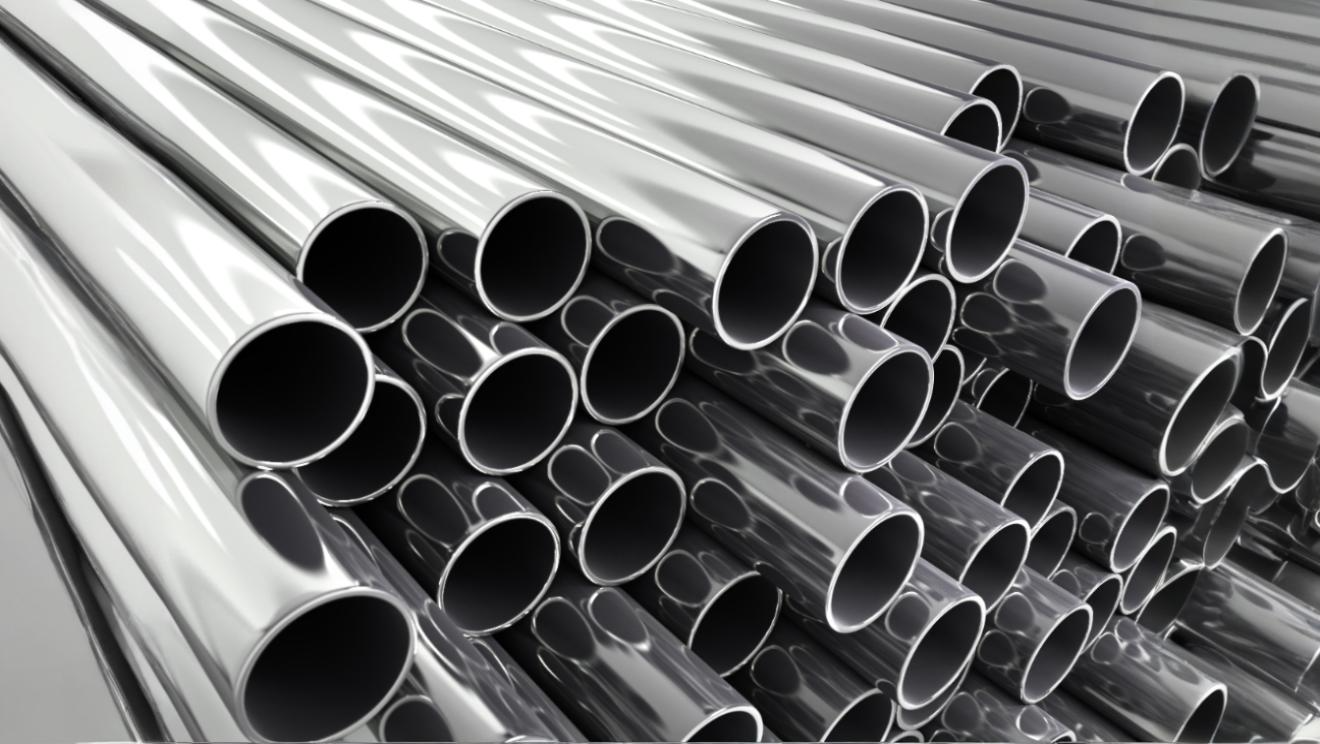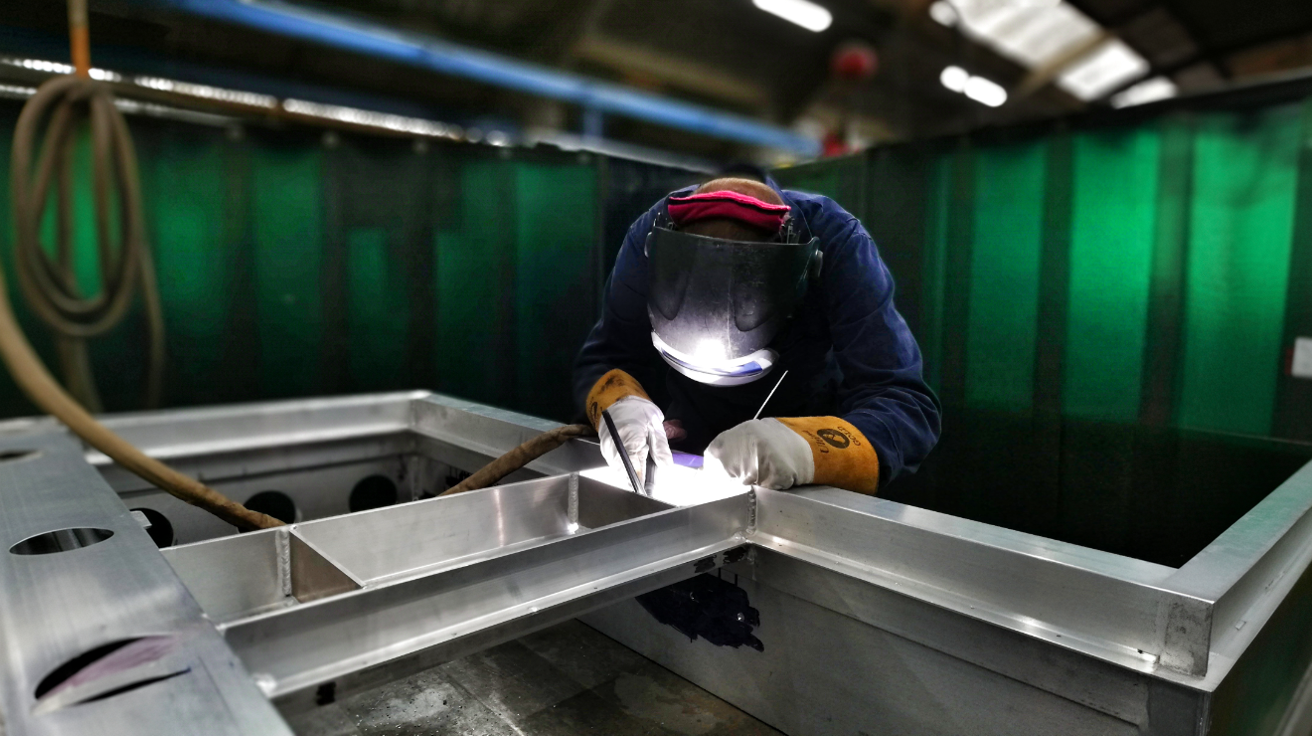Stainless Steel Fabrication: Benefits, Applications and Best Practices
Stainless Steel Fabrication: Benefits, Applications and Best Practices
Have you ever wondered why your car’s bumper is already rusting, but your kitchen countertop still looks brand new after years of use?
Harry Brearley, a metallurgist from Sheffield, accidentally made stainless steel in 1913 while trying to make better gun barrels. The “happy accident” he had turned into one of the most useful materials in the world. It’s the same stuff that keeps your kitchen spoons shiny and your skyscrapers standing strong.
Stainless steel fabrication is important for many buildings and systems we use daily. This includes clean food processing lines and coastal façades that can resist salt and sand. Stainless steel is the best choice for projects that need to last. It resists rust, lasts a long time, and has a clean finish.
Benefits of stainless steel fabrication
The unique properties of stainless steel make it a great material to work with:
Resistant to corrosion
At least 10.5% of stainless steel is made with chromium. When chromium touches oxygen, it creates a thin, invisible layer of chromium oxide. This layer protects the metal below it. The layer can heal itself if it gets damaged, which is why stainless steel works so well in wet, salty, or chemically harsh environments.
Strength and durability
Stainless steels keep their shape and strength over a wide range of temperatures, from very cold to very hot. This makes them good for tough jobs like boilers, heat exchangers, and pressure systems.
Clean and safe
Stainless steel is a common material for food, drink, and pharmaceutical equipment. Its smooth, non-staining surface is easy to clean and resists germs.
Looks aesthetic
Stainless steel fabrication looks modern and comes in finishes from matte to mirror polish. It doesn’t need paint or special coatings to stay shiny. This makes it a popular choice for buildings and decorations.
Sustainability
Stainless steel is very recyclable and often has a lot of recycled content in it. It lasts a long time, so it doesn’t need to be replaced as often, which is better for the environment over its whole life.
Key applications
Stainless steel is used in a lot of different ways because it is so useful, like:
- Food and drink: Stainless steel is safe to use with food when making and keeping it. Stainless steel tubes are safe for moving food, and kitchen surfaces made of it stay germ-free.
- Medical and healthcare: Stainless steel is great for medical tools because it can be cleaned and reused. It can be sterilized many times.
- Automotive and transportation: Parts that manage engine fumes, decorations, and key parts that keep the vehicle together.
- Oil, gas, and petrochemicals: Tubes, containers for liquids under pressure, and parts used at sea that don’t rust in tough conditions.
- Water and desalination: parts that are used in salty or ocean-based settings.
Many steel fabrication companies in Dubai and other parts of the Emirates are using CNC precision. They also use proven shop methods. This helps them build large industrial systems and custom architectural features.
The best ways to work with stainless steel
When done right, fabrication keeps stainless steel looking and working great. Some basic things must be done.
Using the right techniques when working with stainless steel fabrication can help you avoid the most common mistakes.
Stop cross-contamination
Iron particles from carbon steel tools can get stuck in stainless steel surfaces and then rust, leaving marks. If you share tools, brushes, or other items with stainless steel, make sure to clean them well before using them.
During welding and cutting, keep an eye on the heat input.
Stainless steel doesn’t conduct heat well, so it builds up quickly. Too much heat can change the shape of something or make it less resistant to corrosion (sensitization). Use the right welding methods (GTAW/TIG for precision and root passes; GMAW/MIG or mechanized welding for higher productivity). Control the speed of travel and the temperature between passes, and cool the welds when necessary.
Back-purging and choosing the right filler
Back-purging with inert gas stops oxidation on the inside surface of through-pipe welds. To prevent corrosion and ensure good mechanical fit, use filler metals that match the base alloys. For example, use ER316L for base metal 316L.
Finishing and passivation
Polishing with machines makes things look better and cleaner. Chemical passivation uses citric or nitric acid. It removes free iron and restores a strong chromium-oxide layer after the item is made. Electropolishing can make things even more resistant to corrosion and easier to clean for high-end uses.
Pick the right grade
Type 304 is a good option for general use. Type 316 or 316L is better when you need to resist chloride. This is important in marine or chemical environments. Duplex and super-duplex grades are used when you need more strength or resistance to high levels of chloride.
Testing and quality control
Use accepted standards and testing methods. This includes welder qualifications (ASME/ISO), material verification (PMI), and nondestructive testing. Nondestructive testing methods include visual, dye-penetrant, ultrasonic, and radiography. Use these methods when they are important. According to the code, pressure systems should be tested using either water or air.

For a quick comparison to help you pick the right alloy for the job
Makeup and rust: Carbon steel doesn’t have the chromium that makes stainless steel resistant to rust; it needs paint or coatings to protect it.
Cost and lifespan: Stainless steel costs more at first, but it usually lasts longer. It needs less maintenance, making it a better choice for places that care about corrosion or hygiene.
Differences in fabrication: It is usually easier and cheaper to shape and weld carbon steel in heavy structural work. Stainless steel requires careful control of contamination, heat input, and finishing to achieve long-term performance goals.
Typical choice: Use carbon steel for structural work that needs protection and is budget-friendly. Choose stainless steel for projects that are exposed, corrosive, hygienic, or high-value. This balance highlights the key considerations in carbon steel vs stainless steel selection for fabrication projects.
Stainless Steel Fabrication in the UAE
There is a high demand for stainless solutions in the UAE. This is due to the construction and industrial boom. This boom includes luxury hotels and large oil, gas, and desalination plants. In the area, fabricators use modern CNC cutting and robotic welding. They also maintain controlled shop environments. Careful on-site procedures ensure parts work well in hot, dusty, and coastal conditions. This skill is very helpful for users who deal with chloride, large temperature changes, or strict hygiene rules.
Design and maintenance tips to extend service life
- Don’t use designs with crevices where water or debris can get stuck; make sure the design allows for drainage and cleaning.
- To stop galvanic corrosion, use the right fasteners and keep different metals apart.
- To keep dirt and scratches from getting on finished surfaces, protect them during transport and installation.
- In coastal or polluted areas, plan regular washdowns to remove salt and other deposits. Also, check important joints from time to time.
conclusion
Stainless steel is essential for food, medical, marine, petrochemical, and architectural projects. It resists rust, lasts a long time, is easy to clean, and looks great. Teams can make sure that their products have a long, low-maintenance service life and a better lifecycle value by choosing the right grade, controlling contamination, controlling heat during welding, and using the right finishing and testing.
The last step is to pick a stainless steel fabrication partner who has proven shop controls and experience on the job. Kingston Technical Contracting LLC uses these best practices on all of its stainless projects in the Emirates. This means that each job gets shop-level quality, tested welding methods, and passivation routines


